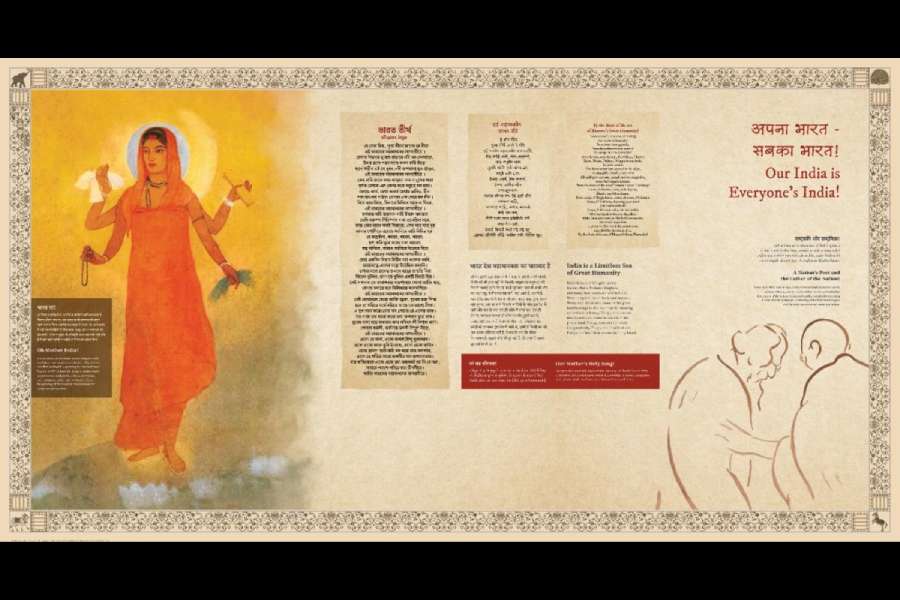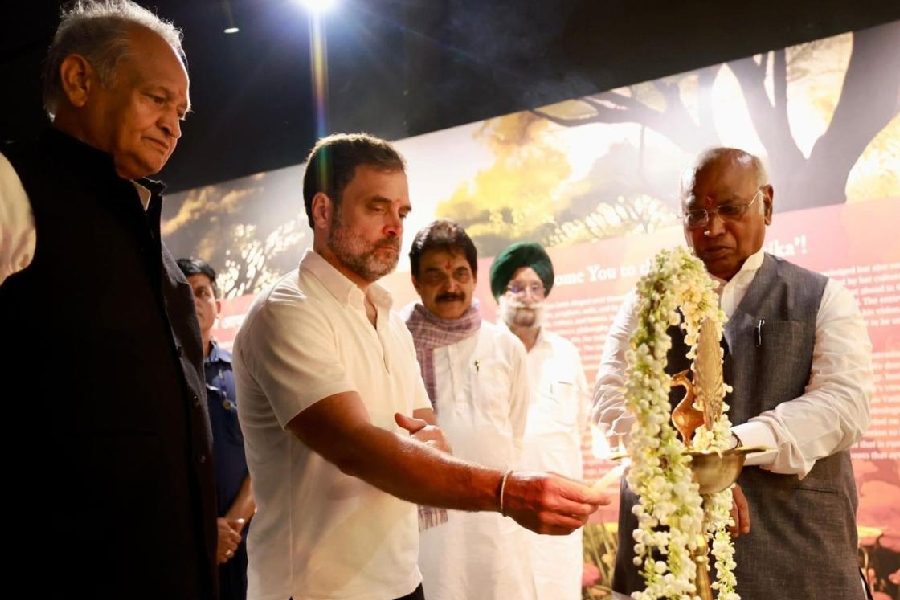An architect born and raised in Calcutta led the research and content team behind a newly built museum on the life and teachings of Mahatma Gandhi, which was inaugurated last week in Jaipur.
Kamalika Bose, the architect, said Gandhi continues to remain contemporary in today’s times of “violence and strife, wars and weapons, hate and division”.
His message of Hindu-Muslim amity is very relevant in today’s times. Bose said the museum emphasises the fact that Gandhi did not celebrate the Independence, but went on peace missions, walking across villages in Bengal, to stop the fighting between Hindus and Muslims.
“As a frail 77-year-old, he was undertaking long walking trails — his ‘Peace Mission’ during the partition riots — in Calcutta, Noakhali and various villages of undivided Bengal. As a healing balm on the wounds of a battered and bleeding country and its people,” said Bose, who was also trained at the Curatorial Department of Smithsonian Institution in New York.
Named Gandhi Vatika, the museum begins with a section on the idea of India. There is an image of Bharat Mata — originally a painting by Abanindranath Tagore in 1905. The wall also has Rabindranath Tagore’s Bharat Tirtha poem, said Kumar Prashant, chairperson of Gandhi Peace Foundation.
The wall also has Jamini Roy’s sketch of Gandhi-Tagore.
The 85,000 sq ft museum, conceptualised by Gandhi Peace Foundation and built by the Rajasthan government, will be opened to the public next month.
Kumar said Gandhi Vatika is a cultural statement against the attempt to destroy Gandhian values.
“There is a concerted effort by the Union government and many state governments to destroy the values of Gandhi. While they celebrate Gandhi in front of the world, in quiet they are doing everything to erase Gandhi from people’s memory,” said Kumar. “This museum is a counter to that attempt. The more you destroy, the more we will build.”
The apex body of all Gandhian institutes in the country recently wrote to G20 leaders about how Gandhian organisations are under attack.
“Even when the government uses the name of Gandhi as part of India’s soft power diplomacy, a systematic effort is made to erase the ideas of Mahatma Gandhi either by spreading false propaganda against Gandhi or by distorting Gandhian views or attacking Gandhian organisations...,” read the September 20 letter from Sarva Seva Sangh.
“Since Independence, there has not been a time when more writers, activists, journalists, human rights workers have been behind bars. This is anti-Gandhi,” said Kumar.

A 2D artwork of a wall in the museum that focuses on the idea of India. It has reproduced images of Bharat Mata (which was painted by Abanindranath Tagore in 1905), Rabindranath Tagore’s Bharat Tirtha poem and Jamini Roy’s sketch of Gandhi and Tagore
A section in the museum focuses on the Mahatma’s presence after his death. “We have displayed a portion of his last writing on the night of January 29, 1948, where he says that India has achieved political freedom, but economic and cultural freedom was yet to come,” said Kumar.
Bose said the buildings housing the museum, designed by A Mridul Architect of Jodhpur, look similar to Gandhi ashrams across the country. “They are not tall buildings. They are one floor above the ground. There are subterranean floors, too,” she said.
“The design intent was not to merely present Gandhi’s life story or personal objects or original artefacts. There are already several museums which do that. But for the visitor to carry back his ‘vichaardhara’ and dwell upon it, while questioning and seeking answers,” said Bose, who leads research and content development of the museum for Lokusdesign, a Pune-based museum design firm.
The leader of the Opposition in Rajya Sabha, Mallikarjun Kharge, inaugurated the museum on September 23 along with Rajasthan Chief Minister Ashok Gehlot and Congress MP Rahul Gandhi.
